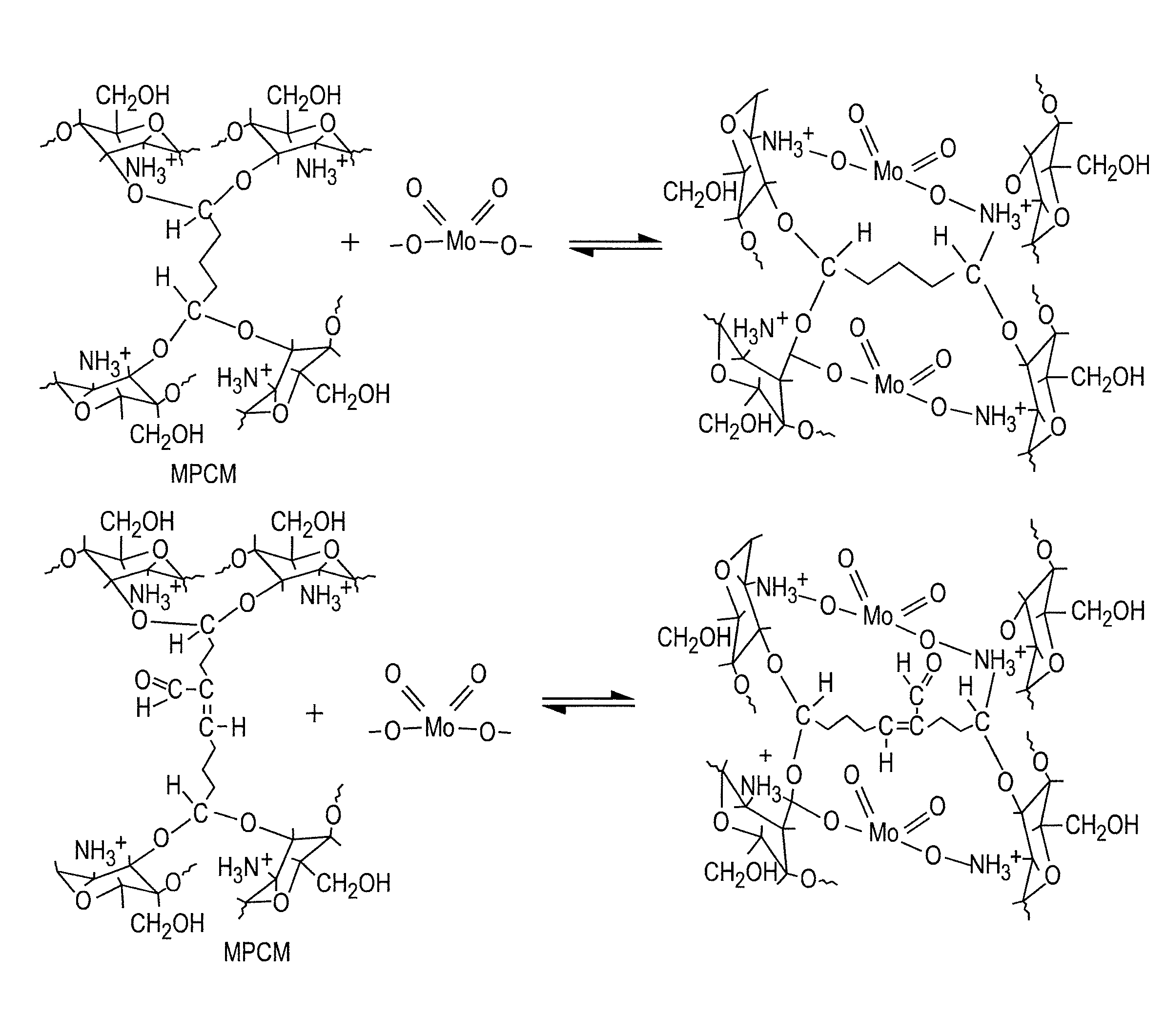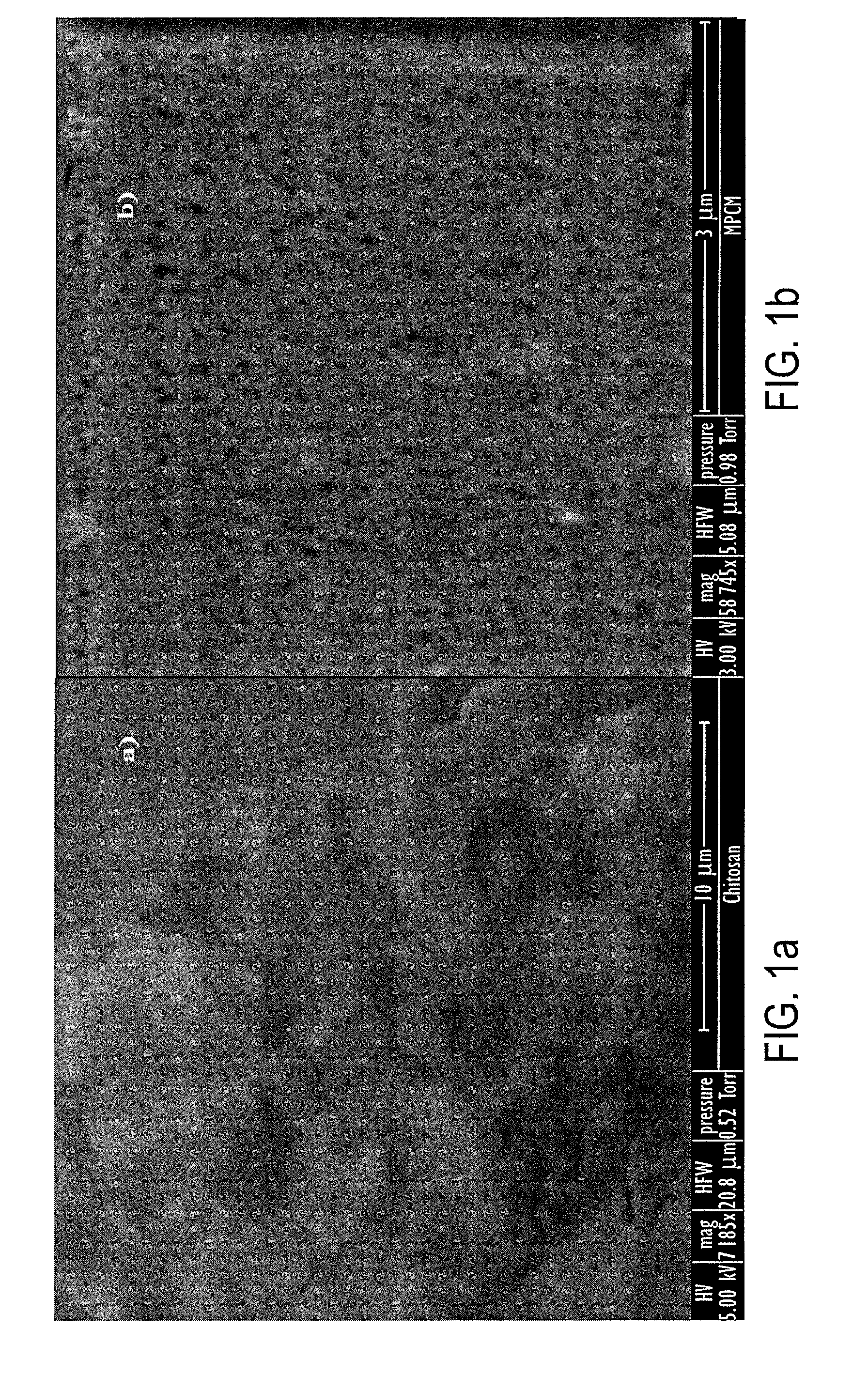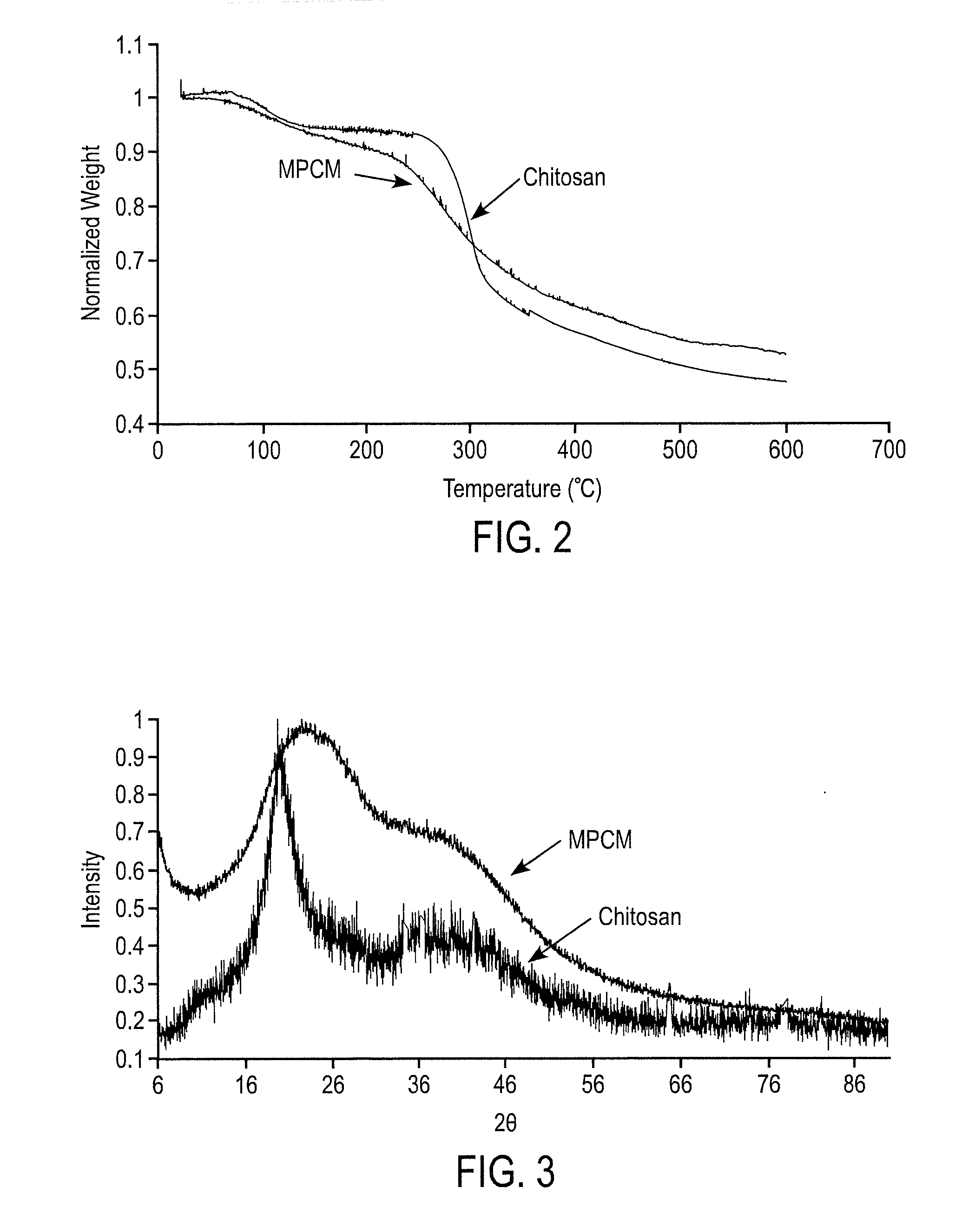Preparation of chitosan-based microporous composite material and its applications
a composite material and microporous technology, applied in the field of chitosan modification, can solve the problems of large radioactive waste generated by the heu process, inability to reprocess unused uranium targets, and present production, storage and disposal challenges, and achieve excellent low-cost alternative adsorption materials, cost and capacity.
- Summary
- Abstract
- Description
- Claims
- Application Information
AI Technical Summary
Benefits of technology
Problems solved by technology
Method used
Image
Examples
example 1
[0080]The ionic capacity of the chitosan used in this study was in the range of 9 to 19 milliequivalents / g, measured using a standard titrametric method. About 4 g of chitosan was added to 300 mL DI water with 1 mL acetic acid and stirred for 2 hr at 70° C. to form a gel. Approximately 5 mL of HCl / HNO3 was added into the chitosan gel and kept under continuous stirring for another 1 hr at 70° C. to assist protonation of the amino substituent groups, which is beneficial for the reasons given below.
[0081]The reaction with gluteraldehyde was performed by drop-wise addition of approximately 6 mL gluteraldehyde solution, having a concentration of 50%, to the acidic chitosan gel under continuous stirring (established based on trial and error, but generally from 200 rpm to 500 rpm) at 70° C. The final pH of the mixture was approximately 1.0. The amount of gluteraldehyde was used in this study was established based on trial and error basis. The mixture was kept under continuous vigorous stir...
example 2
[0121]In another embodiment, MPCM was oxidized with different concentrations of hydrogen peroxide with or without the presence of transition metal catalysts. Temperature was also varied. The oxidation studies of MPCM with hydrogen peroxide were performed to determine whether controlled oxidation alone would improve technetium recovery from the technetium loaded MPCM. The concentration of hydrogen peroxide was varied from 1% to 5%. Batch technique was used to adsorb technetium onto oxidized MPCM. The regeneration of technetium from the oxidized MPCM was conducted in a column. The column was prepared with 0.12 mole of 99Tc / gram of oxidized MPCM. The column was regenerated to desorb technetium from the oxidized MPCM using 0.9% NaCl solution. It was observed that the recovery of technetium was not as high as was desired, since 10 to 17% of available technetium was recovered from the oxidized MPCM bed (Table 6). Moreover, the adsorption of Mo (VI) onto peroxide-oxidized MPCM reduced to 4...
example 3
[0122]MPCM was also oxidized using potassium permanganate in solution. The concentration of potassium permanganate in the solution and the oxidation time was determined based on trial and error. The concentrations of potassium permanganate and the pH of the solution were varied from 0.1% to 5% and 3 to 11, respectively. The oxidation time was varied from 30 minutes to 24 hours. The surface charge analysis of oxidized and non-oxidized MPCM loaded with Mo (VI) was also performed to elucidate the pertechnetate (TcO4−) adsorption pattern on oxidized MPCM.
[0123]It was observed that permanganate solution containing 0.04 mmole of Mn / L of solution at the pH range of 3 to 4.5 and 12 hours time period was sufficient to oxidize MPCM partially to facilitate maximum uptake of molybdenum and simultaneous release of technetium from the MPCM sorbent. The performance of the oxidized MPCM was evaluated for molybdenum adsorption from aqueous solutions using batch technique. It was noted that oxidized ...
PUM
| Property | Measurement | Unit |
|---|---|---|
| Temperature | aaaaa | aaaaa |
| Fraction | aaaaa | aaaaa |
| Substance count | aaaaa | aaaaa |
Abstract
Description
Claims
Application Information
 Login to View More
Login to View More - R&D
- Intellectual Property
- Life Sciences
- Materials
- Tech Scout
- Unparalleled Data Quality
- Higher Quality Content
- 60% Fewer Hallucinations
Browse by: Latest US Patents, China's latest patents, Technical Efficacy Thesaurus, Application Domain, Technology Topic, Popular Technical Reports.
© 2025 PatSnap. All rights reserved.Legal|Privacy policy|Modern Slavery Act Transparency Statement|Sitemap|About US| Contact US: help@patsnap.com



